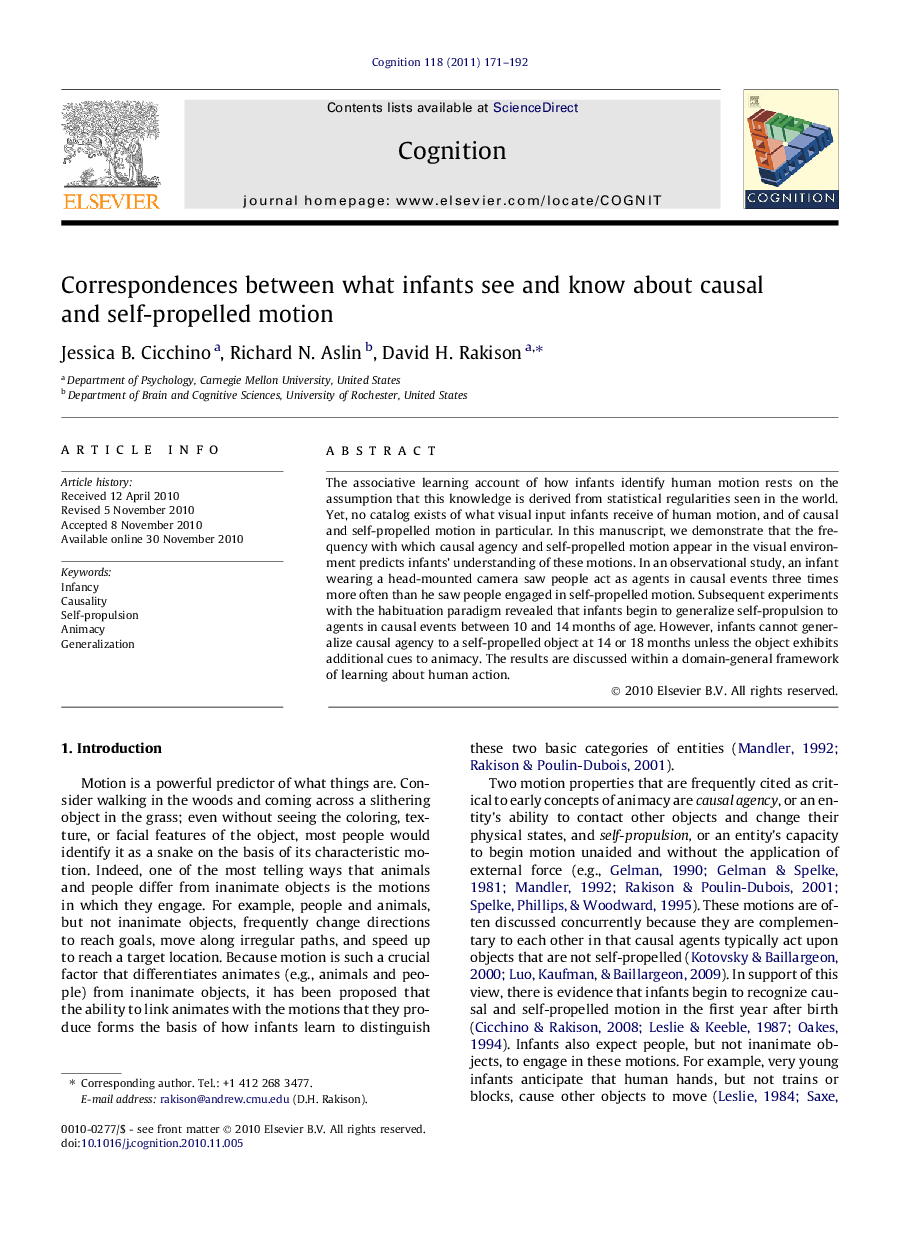| کد مقاله | کد نشریه | سال انتشار | مقاله انگلیسی | نسخه تمام متن |
|---|---|---|---|---|
| 10457930 | 921937 | 2011 | 22 صفحه PDF | دانلود رایگان |
عنوان انگلیسی مقاله ISI
Correspondences between what infants see and know about causal and self-propelled motion
دانلود مقاله + سفارش ترجمه
دانلود مقاله ISI انگلیسی
رایگان برای ایرانیان
کلمات کلیدی
موضوعات مرتبط
علوم زیستی و بیوفناوری
علم عصب شناسی
علوم اعصاب شناختی
پیش نمایش صفحه اول مقاله

چکیده انگلیسی
The associative learning account of how infants identify human motion rests on the assumption that this knowledge is derived from statistical regularities seen in the world. Yet, no catalog exists of what visual input infants receive of human motion, and of causal and self-propelled motion in particular. In this manuscript, we demonstrate that the frequency with which causal agency and self-propelled motion appear in the visual environment predicts infants' understanding of these motions. In an observational study, an infant wearing a head-mounted camera saw people act as agents in causal events three times more often than he saw people engaged in self-propelled motion. Subsequent experiments with the habituation paradigm revealed that infants begin to generalize self-propulsion to agents in causal events between 10 and 14Â months of age. However, infants cannot generalize causal agency to a self-propelled object at 14 or 18Â months unless the object exhibits additional cues to animacy. The results are discussed within a domain-general framework of learning about human action.
ناشر
Database: Elsevier - ScienceDirect (ساینس دایرکت)
Journal: Cognition - Volume 118, Issue 2, February 2011, Pages 171-192
Journal: Cognition - Volume 118, Issue 2, February 2011, Pages 171-192
نویسندگان
Jessica B. Cicchino, Richard N. Aslin, David H. Rakison,